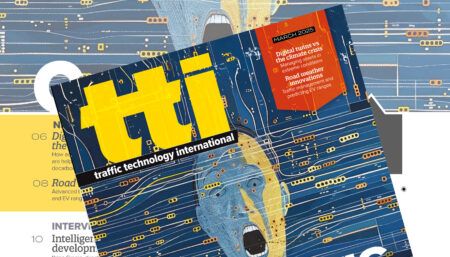With around 11.55 million inhabitants in its central area, and 19 million including the surrounding satellite suburbs, Moscow is one of the largest and most congested cities in the world. Particularly during rush hour, the city has to contend with heavy congestion on its arterial and ring roads, and currently ranks as number one on TomTom’s Traffic Index for European cities. To counter this, the city has recently installed state-of-the-art traffic management technology and implemented an Intelligent Traffic System (ITS), which has been described as “one of the best in the world,” by Moscow’s mayor, Sergey Semyonovich Sobyanin. At the heart of Moscow’s new ITS system is the PTV Group’s Optima model-based system, which provides accurate traffic information in real-time and also enables dynamic forecasting for a timescale of 60 minutes.
Through a combination of real-time data, analytics and validated transport modelling, the Optima platform provides transport authorities with real-time traffic information for the entire road network. During the implementation in Moscow, particular emphasis was placed on the connection to the city’s traffic signal control systems, which will help traffic managers to react flexibly to traffic conditions through adaptive changes. Optima can also produce reliable traffic forecasts for the next 60 minutes due to its model-based approach, and is also able to produce forecasts for minor roads, where there is no initial data. In contrast to a purely statistical approach, which compares time profiles observed with historical samples, the model-based simulation approach relies on a physical interpretation of the traffic network and conditions. Using this technique, even the effects of unexpected and unprecedented events, such as accidents or road works, can be forecasted and the effects of alternative traffic management measures can be simulated in real-time. This provides ideal support to transport authorities, helping them to select and implement the best strategy from various options.
In addition to real-time traffic monitoring and its visualization on the city map, Moscow’s dynamic transport model has a number of additional modules, including, residency requirements and taxi occupancy rates, and the ability to send or create ‘heat maps’, in order to locate accident black spots on the transport network and eliminate their causes. “Optima is the key to successful traffic management,” said Miller Crockart, vice president of global sales & marketing for traffic software at PTV. “To produce a coherent and detailed picture of traffic, Optima collects, compares, validates and combines data from multiple sources. Our model-based approach is unmatched in its field. The use of its additional functions makes the Moscow ITS system unique, and raises the bar in megacity traffic management.”




